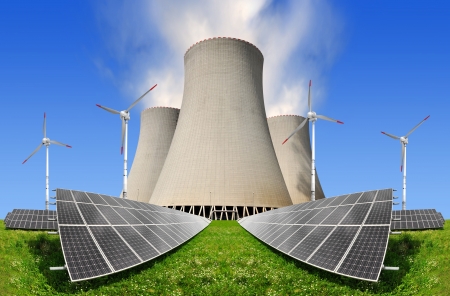
Renewables and nuclear: False hopes and unfounded fears
The world is becoming an increasingly hostile place for power plants that use traditional fossil fuels to generate power. Even Joe Biden, who is expected to become President of the U.S. soon, has made it a priority to abolish traditional fossil fuel-based power.
But among the available alternative energy sources, the focus has mainly been on renewables and rarely does the media address the importance of Nuclear energy. Here we will analyze which of these two holds the potential to deliver us the power we need and the surprising facts that the media refuses to inform the people about.
Wind and Solar are the most commonly highlighted renewable sources. The other renewable sources (like biomass and geothermal) are not practically viable options for large scale power generations globally and hence hardly of interest to any large country that is serious about their energy independence. But even the hype surrounding Wind and Solar are now appearing to be impractical.
I grew up in a scenic countryside that was littered with windmills. The concept of wind energy was familiar to me. Solar was not uncommon as even rural areas in India had houses which boasted solar panels.
What I was not familiar with was the problems associated with both Wind and Solar. I began to hear negative feedback from my friends whose industrial machines were impacted due to the intermittent energy supply from these windmills. Energy from those windmills gave plenty of headache to the consumers and energy companies.
This is because both Wind and Solar are intermittent sources of Energy. They are not capable of producing–even with backup sources–continuous baseload power in the same way that a coal plant or a nuclear plant produce. This means that when there is not enough wind or enough sunlight, the lack of power from these sources has to be substituted with energy from conventional sources like Thermal power plants, nuclear plants, and hydro power stations. There is no indication on whether this will change in the near future.
Nuclear plants, on the other hand, is a proven and reliable source of power generators. However, nuclear energy has received a lot of pushback in recent decades because of the accidents at Fukushima and Chernobyl, and the subsequent claims about their unsafe nature in the media.
But the reality is far different to the public perception. Chernobyl nuclear accident happened partly because of intentional negligence of a faulty reactor at the plant. The media has over-hyped the accident’s impact too. The United Nations says that only two workers were killed in the accident.
UCLA physicians say that the children that have been born close to Chernobyl had no detectable abnormalities during their birth. Michael Shellenberger, an environmentalist, reminds us that, “Radiation from Chernobyl (accident in the past) will kill, at most, 200 people, while the radiation from Fukushima and Three Mile Island (other major nuclear accidents) will kill zero people.”
Unlike wind and solar, Nuclear energy has been subjected to biased media treatment despite being superior to the renewables. For example, nuclear power plants emit 300 times less toxic waste per unit of energy generated than the so called “clean” Solar power. Wind energy too comes with a toxic tag.
Further, Nuclear energy is a resource efficient. Wind farms require up to 360 times more land area to produce the same amount of electricity as a nuclear energy facility. While Solar and Wind are infamous for increasing energy prices, Nuclear plants produce power at an affordable cost and keep the electricity prices in check.
Renewables have been promoted based on a promised future even after their proven inability to provide reliable baseload power and a lack of a non-fossil backup source to support them when they do not work. In contrast, Nuclear has been blacklisted for safety concerns despite a proven safety standard and no major life loss from the three major accidents in the recent past.
If we are truly about diversifying our energy sources, making energy affordable to our communities, have a stable source of power that can support the booming economy, then it is time we lay aside false fears and adopt nuclear energy.
Vijay Raj Jayaraj
“Vijay Jayaraj (M.Sc., Environmental Science, University of East Anglia, England), is an Environmental Researcher based in New Delhi, India. He served as a Graduate Research Assistant at the University of British Columbia, Canada and has worked in the fields of Conservation, Climate change and Energy.”
From cfact.org